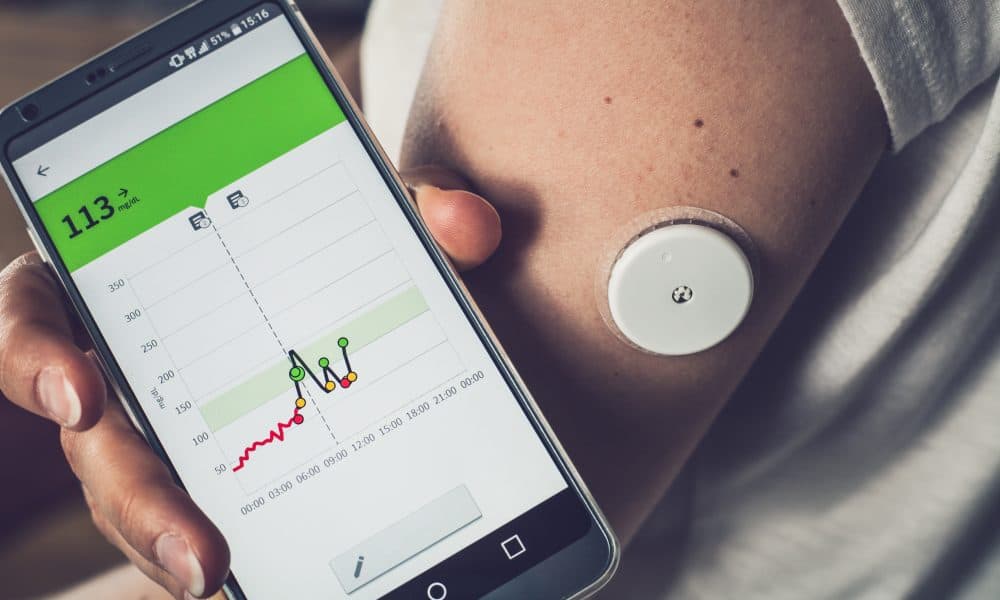
There is a lack of evidence to demonstrate the effective use of continuous glucose monitors (CGMs) in people not living with diabetes (PNLD), a study led by researchers at UCL and Birmingham Children’s Hospital has found.
The researchers concluded there is currently little published evidence on how accurate CGMs are in measuring blood glucose levels in PNLD, nor sufficient evidence of what the health benefits or utility such information would provide.
They also suggest CGMs may have unintended adverse health effects in this user group and are now calling for better regulation.
Senior author and dietitian, Dr Adrian Brown (UCL Division of Medicine), said: “Several health companies are now using CGMs as part of paid-for programmes designed to give people personalised nutrition information.
“Some claim to tailor a person’s diet and activity to help keep blood glucose within ‘normal’ levels.
“But what constitutes a normal blood sugar level varies between individuals and in the same individuals at different times, and CGM accuracy varies between CGM models.
“With this in mind, we wanted to see what research had been undertaken into the use of CGMs in people who do not have diabetes.”
In recent years, CGMs have helped transform the treatment of type-1 diabetes and have been used with good effect by people with type-2 diabetes who are on insulin therapy.
The devices, originally developed for those with diabetes, are attached to the body and monitor blood glucose levels in real-time, transmitting the information to an insulin pump in people with type-1 diabetes that delivers the correct amount of insulin required to keep blood glucose levels within a defined range.
For those living with diabetes, CGMs are less burdensome and offer real-time trends in glucose changes compared to older testing methods, such as regular finger prick blood tests.
However, more recently CGMs have been increasingly marketed to PNLD for uses without a medical indication, such as health, wellness and lifestyle management, with some companies providing advice around how to manage glucose levels or ‘glucose spikes’.
In this narrative review, researchers analysed 25 relevant studies in online databases from the years 1980-2023, for studies examining aspects of CGM utility and performance in PNLD.
They then looked to establish what, if any, evidence there was on how effective CGMs were at measuring glucose levels, glucose variability and elevated glucose levels in PNLD, as well as any research on the influence of CGM use on eating behaviours.
The review concludes that there is a lack of consistent and high-quality evidence to support CGM use in PNLD.
For instance, there is little evidence to show how accurate CGMs are at measuring blood glucose levels or detecting changes in PNLD, nor sufficient research into the value and utility of the CGM data obtained in PNLD.
The review also found evidence that CGM use in PNLD could cause anxiety about what is normal in terms of diet and blood sugar levels.
Researchers say this could present a risk of developing eating disorders, such as orthorexia (an unhealthy obsession with eating ‘pure’ food).
An earlier separate review by the authors, referenced in this paper, looked at the regulation of CGM in people with diabetes, and found there was no specific statutory guidance available.
Co-author John Pemberton is a Specialist Paediatric Diabetes Dietitian from Birmingham Children’s Hospital who sits on the International Federation of Clinical Chemistry (IFCC) and Laboratory Medicine Working Group on CGM.
He said: “While CGMs for people not living with diabetes show promise, the accuracy, regulatory standards, and psychological impacts of false highs and lows are not well understood.
“Despite this, CGMs are being heavily promoted without mention of these issues.”



